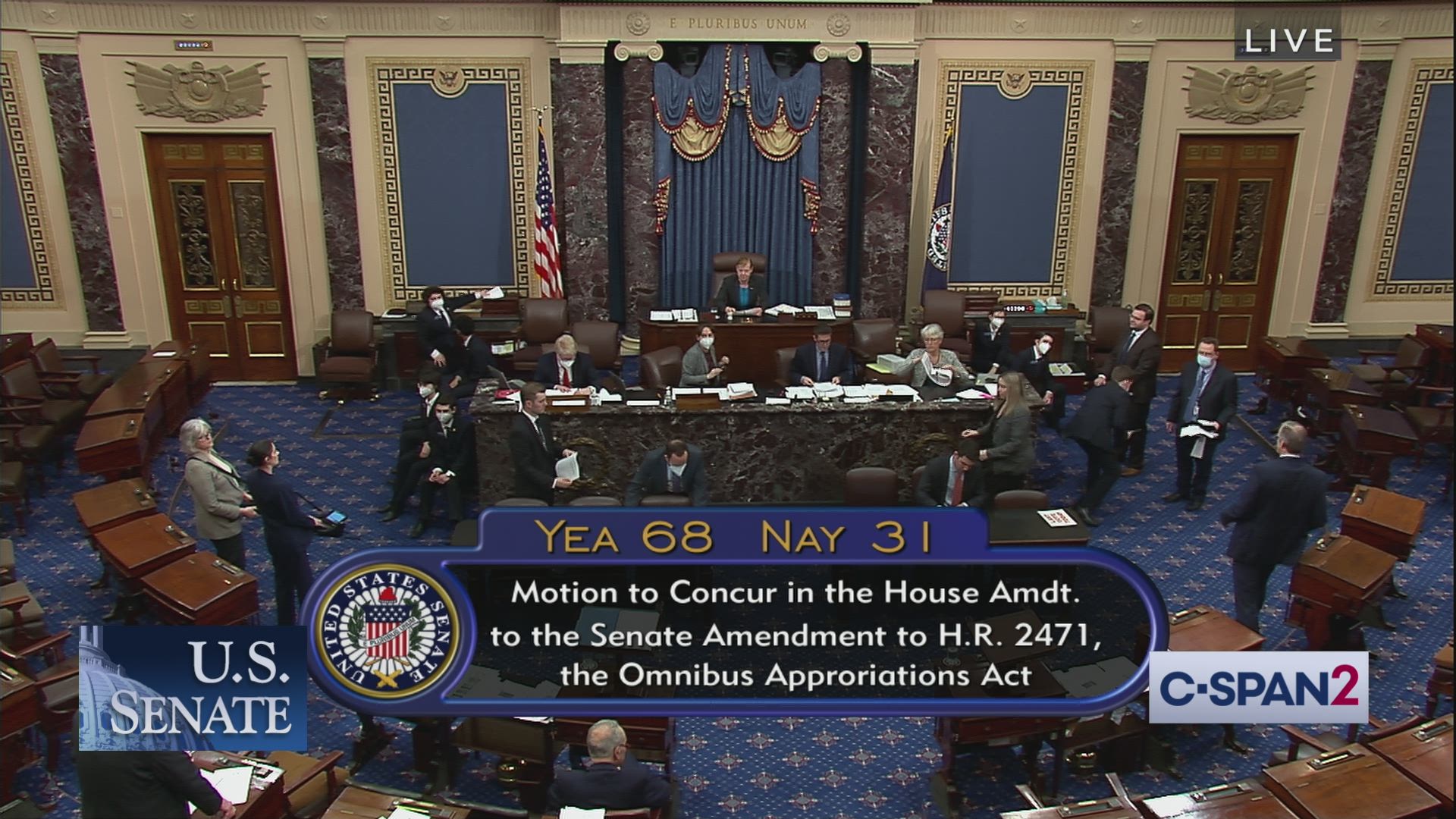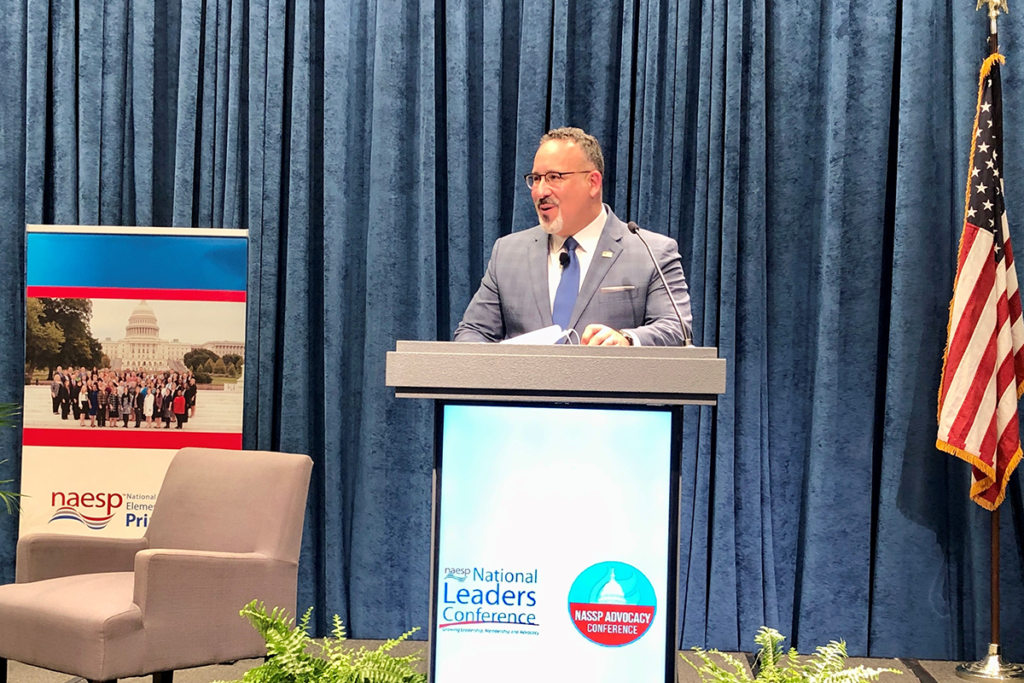
FY K-12 Federal Funding Approved
Topics: Advocacy and Legislation
After months of legislative haggling and delays, the U.S. Congress passed an FY22 omnibus funding bill (omnibus) on March 10. The legislation will be signed into law and take effect immediately. The FY22 fiscal year began on Oct. 1, 2021, but until now, Congress had been unable to reach agreement on new funding levels. As a result, federal programs, including K-12 programs at the U.S. Department of Education (USED), had been operating at FY21 funding levels.
The FY22 omnibus provides $76.4 billion for the USED—an increase of $2.9 billion above current funding levels. Of the funding allotment for USED, K-12 education comprises $42.6 billion, which represents a $2 billion increase over FY21 levels. The new funding for these core K-12 federal programs will now be in effect until Sept. 30, 2022 (see details below on funding levels).
Though K-12 programs received funding increases, the omnibus falls short of the funding levels approved in previous versions of the legislation, which included a doubling of Title I funding and a 20-percent increase to IDEA. In addition, school meal waivers that had been in effect since the pandemic began were not extended and will now sunset in June 2022. Still, the strong funding levels in the FY22 omnibus, coupled with the federal COVID-19 relief funding schools are already receiving, means principals will be well-positioned to confront this recovery period head on.
The passage of the FY22 omnibus legislation follows NAESP members, as part of the 2022 National Leaders Conference, advocating last week on Capitol Hill for increases in K-12 funding in the FY22 bill. Below are details of funding for K-12 programs included in the bill:
- Title I — $17.5 billion, an increase of $1 billion over FY21. This is the largest increase in the program in more than a decade
- IDEA Grants to States — $13.3 billion, an increase of $406 million over FY21 levels
- Title II, Part A — $2.2 billion, an increase of $27 million over FY21 levels
- Mental Health Professionals — $111 million for mental health professionals in schools, includes:
- $55 million for Mental Health Services Professional Demonstration Grants, a $45 million increase over FY21 levels
- $56 million for School-Based Mental Health Services Grants, a $45 million increase over FY21 levels
- Title IV, Part A (Student Support and Enrichment) — $1.3 billion, an increase of $60 million over FY21 levels
- Title IV, Part B (21st Century Community Learning Centers) — $1.3 billion, an increase of $30 million over FY21 levels
- SEL Programs — $82 million, an increase of $15 million over FY21 levels
- Community Schools — $75 million, an increase of $45 million over FY21 levels
In the coming weeks, the FY23 budget will be released and NAESP will be engaging with congressional leaders to ensure robust investments in federal K-12 programs continue.
Advocacy in Action
The Principal’s Role in Influencing Education Policy
Informed by findings in the Leaders We Need Now research series, this resource can be used as a starting point to engage with legislators and district leaders on important policy issues affecting schools.
Education Secretary Miguel Cardona Discusses Role of Principals in Helping Students Recover

The work of school leaders will not get easier; it will get different. I commit to giving principals a seat at the table so the decisions we make in Washington, D.C., are guided by your experience. We have the opportunity to rethink how we do school. We need to disrupt the system and how we lead learning and reset how schools are designed to meet the needs of students. If we don’t get mental health supports in our schools, we’re going to fail our kids. Lead with the greatest sense of urgency you can muster. The best days of education are still ahead of us.
U.S. Secretary of Education Miguel Cardona recently spoke to principals at a joint session held with National Association of Secondary School Principals (NASSP) during NAESP’s 2022 National Leaders Conference. NAESP Executive Director L. Earl Franks and NASSP CEO Ronn Nozoe led a Q&A with Cardona following his remarks.
Educators and Loan Forgiveness
Did you know educators who are employed by public elementary and secondary schools are eligible for the Public Service Loan Forgiveness (PSLF) program? PSLF forgives the remaining balance on direct loans when full-time employees make 120 qualifying monthly payments under a qualifying repayment plan, but those rules have been suspended through Oct. 31, 2022.
What’s that mean for you? You might get credit for payments on made on loans that wouldn’t normally qualify for PSLF. Learn more about whether you qualify and access the PSLF tool to complete the form.
How to: Build Relationships With Legislators
Two of the easiest ways to become involved in advocacy are to join a professional association and take the time to get to know your legislators. I have invited legislators to participate in events at my school, visit classrooms, and meet with me. The visits are a great opportunity for students to learn about government, in addition to providing opportunities for legislators to get to know the needs of schools.
Shared by Amy Schott, Henderson Elementary School, Dumfries, Virginia
Fast Fact: Why Mental Health Treatment in Schools?
Youth are six times more likely to complete mental health treatment in schools than in community settings (Jaycox et al., 2010).
Access “School Mental Health: Meeting the Mental Health Needs of the Entire School Community,” presented by Dr. Jill Bohnenkamp, National Center for School Mental Health, and all the presentations from the National Leaders Conference here.

